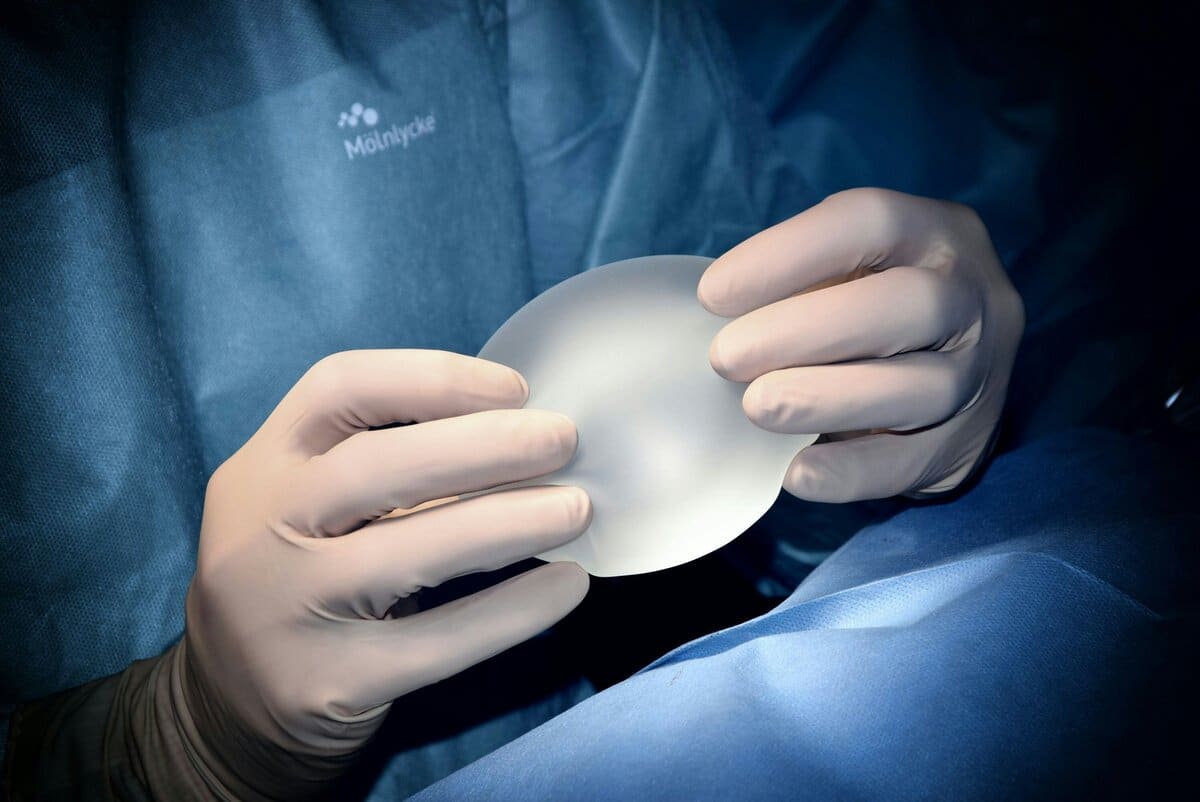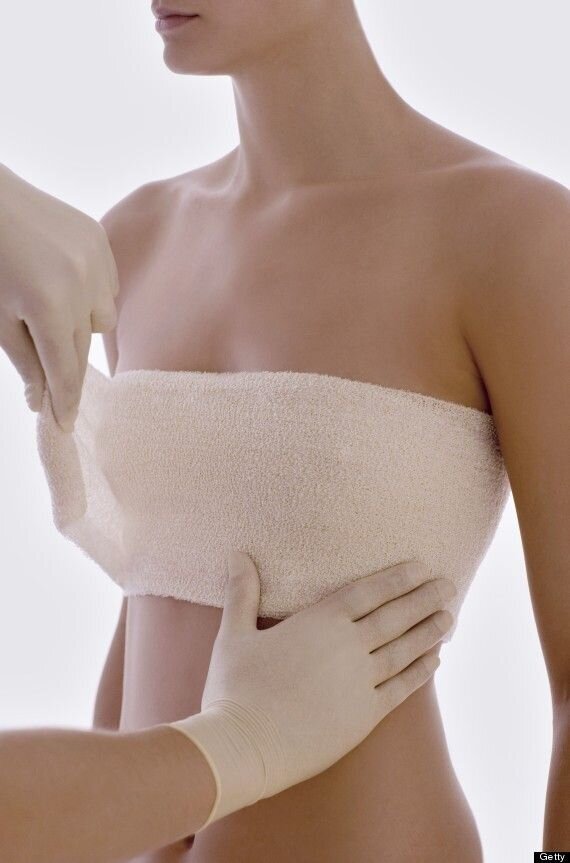Overview & Why Choose Dr. Chang
Breast augmentation-mastopexy is a combination breast surgery that both adds volume to the breasts and aesthetically repositions and contours the nipple areolar complex and breast. Patients who have experienced both breast volume deflation and ptosis of the breast and/or nipple-areola complex from pregnancy or weight loss benefit from this surgery as opposed to breast augmentation or mastopexy alone.
Breast augmentation-mastopexy is one of the most complicated and challenging cosmetic breast surgeries because the surgeon has to accomplish the goals of both breast augmentation and mastopexy while minimizing the compounded risks of both procedures.
Choosing a surgeon who forms a thorough pre-operative plan and can meticulously execute the technical steps is paramount in achieving a pleasing, safe result. Dr. Chang is well-experienced in choosing the best techniques to achieve your goals and using specialized techniques to minimize the risk of complications.
Who Is a Candidate?
- Deflated Breasts with Nipple-Areola Complex Ptosis – Patients who have experienced deflation of their breast volume and dropping or ptosis of the nipple-areola complex, generally from pregnancy changes or weight fluctuations, are the best candidates for the surgery. A breast augmentation or mastopexy alone will solve one of these problems but will insufficiently solve both. Patients with loose or excess skin will benefit from tightening the breast envelope to give a more youthful contour of the breasts.
- Breast Asymmetry – Patients with significant asymmetry in their breasts or nipple-areola complex position may benefit from this combination surgery to best create an aesthetic, symmetrical result.
- Healthy Patients – Healthy, non-smoking patients without major medical conditions that would make surgery or general anesthesia unsafe are candidates for this surgery. Conditions that pre-dispose to increased complications such as diabetes, vascular disease, autoimmune conditions, immunodeficiencies, etc. are still candidates for surgery but require additional pre-operative counseling and optimization.
- Realistic Expectations – Dr. Chang views surgery as a partnership between the patient and him. It is important trust and confidence go both ways. Together, we will discuss your goals and if we can reasonably achieve those goals based on your anatomy.

Pre-Operative
- Medical Evaluation – Dr. Chang will review your medical conditions, medications, prior surgeries, and personal and family history of breast diseases, masses, and cancers. Some patients may be referred to their primary care doctor or a specialist to ensure you are medically optimized for a safe surgery under general anesthesia and post-operative recovery. Because this is an elective surgery, some patients may be recommended to optimize certain parameters before proceeding with surgery. This may include weight loss, smoking cessation, nutrition optimization, resolution of an acute illness or condition, etc.
- Breast Examination – Dr. Chang will perform a physical examination of your breasts. This will include measurements of the size, location, and symmetry of the breasts and nippleareolar complexes. Dr. Chang will assess the skin quality, the weight/volume of excess breast tissue relative to your desired size, and the positions of the nipple areolar complexes to help determine the best surgical approach. Dr. Chang will palpate for any noticeable breast masses.
- Clinical Photographs – Clinical photographs from multiple views will be taken of your breasts. These photos are used to help plan for your individualized surgery and compare before and after surgery. No photographs will be published online without your written consent.
- Imaging Studies – Based on your age, genetic risk, and personal and family history of breast conditions or tumors, you may be recommended for a mammogram, ultrasound, CT, or MRI study. If a lesion is identified, you may be recommended for a biopsy and a consultation with a breast oncologic surgeon prior to proceeding with surgery.
Technique
Incision:
- Wise-Pattern / Anchor / Inverted T – This incision pattern is the most common for augmentation-mastopexies as it allows the most amount of control in the final contour of the breasts. The incisions are around the around the new position of the areola, the breast fold (inframammary fold), and a small vertical incision connecting the bottom of the areola to the breast fold. The incision around the areola is blended in the natural transition between the morepigmented skin of the areola and the less-pigmented breast skin. The incision along the inframammary fold is hidden underneath the breast; if there is a lot of excess skin on the side of your chest, then the incision will continue to the side of your chest but be hidden within your bra line.
- Circumvertical / Lollipop – This incision pattern includes an incision around the areola and a vertical incision from the bottom of the areola to the breast fold, without an incision along the breast fold. This technique limits the scar burden but offers less control of excess skin and is only an option for patients with mildmoderate ptosis of the nipple-areola complex. A hybrid approach combines this technique with a small, limited incision in the breast fold.
- Circumareolar / Periareolar / Donut / Crescent – This incision pattern results in a scar around the entire areola or a portion of it. This technique is generally only used for very mild cases of nipple-areola complex ptosis or asymmetry.
- Breast-Shaping Sutures and Mesh – Regardless of the incision choice, Dr. Chang uses specialized suturing techniques to aesthetically shape the breast. In certain circumstances, Dr. Chang may recommend the use or absorbable mesh to help reinforce the position and shape of the breasts, like an internal bra.
Implant Type
- Saline vs. Silicone – While the implant shells are made of silicone, the filling inside can be either saline or silicone. Silicone implants have a more natural feel but are only FDA-approved for patients 22 years and older.
- Round vs. Shaped – Implants can be either round or shaped like a teardrop to resemble the natural shape of the breast. Because all shaped implants have a textured surface and a textured surface is associated with breast-implantassociated anaplastic large cell lymphoma, Dr. Chang only uses round implants.
- Base-Width, Projection, and Volume – Implants vary in terms of base-width or the diameter of the circular implant, the amount of projection from the chest wall, and total volume.
Implant Plane
- Overview – The implant plane determines outcomes such as degree of implant visibility/palpability/rippling, animation deformity, and capsular contracture. Similar to incision type, Dr. Chang can place implants in any plane in any patient, but the best outcome is achieved when you and Dr. Chang decide together based on your preference and Dr. Chang’s assessment of your anatomy.
- Sub-Glandular – The implant is underneath the breast tissue but on top of the pectoralis major muscle and fascia. This plane has no risk of animation deformity but a higher risk of capsular contracture and implant visibility/palpability/rippling, especially in thin patients.
- Submuscular – The implant is completely covered by your chest wall muscles. This plane has the lowest risk of capsular contracture and implant visibility/palpability/rippling but a higher risk of animation deformity.
- Dual-Plane – The implant is partially covered by the pectoralis major muscle on top, which reduces the risk of implant visibility/palpability/rippling on the upper pole of the breast, and covered by breast tissue on the bottom to minimize the risk of animation deformity.
- Sub-Fascial – This is a specialized technique where the implant is positioned between the pectoralis major muscle fascia and the muscle itself. In this position, the fascia remains connected to all the network of supporting ligaments of the breast so that as much of the normal breast anatomy is preserved. There is no risk of animation deformity and slightly less risk of implant visibility/palpability/rippling and capsular contracture, compared to subglandular.

Post-Operative
- Dressings and Incision Care – Your incisions will be dressed with surgical bandage strips and/or surgical skin glue. You will be wearing a comfortable surgical bra stuffed with gauze pads. The bra should be snug but not overly tight. You should try to wear the surgical bra as much as possible but may remove to shower and to wash the bra. You may shower the day after surgery but cannot bathe or swim until instructed to do so.
- Pain Management & Medications – Local anesthetic (numbing medication) will be injected at your surgical sites to minimize your immediate post-operative pain. You should take acetaminophen and an NSAID around-the-clock, according to instruction, for the first 72 hours and then as-needed thereafter. You can purchase these over-thecounter. You will be given a small number of low-dose narcotic pain medications for breakthrough pain only for the first 72 hours.
- Recovery Period – You are expected to go home the same day of surgery and should be ambulating without restriction the same day of surgery. Depending on your occupation, you may return to work as early as the following week. You may resume light cardio exercises at 2 weeks after surgery. You should not lift anything heavier than 5 pounds or extend your arms extensively over your head for the first 2-4 weeks after surgery. You may resume all physical activities at 4-6 weeks after surgery. Your incisions will take 2-4 weeks to completely heal, but the final scar will take 6-12 months to mature. Scar care will be discussed at your 1 month post-operative appointment. Your implants will be located a little higher on your chest than expected, and they will drop into position over the next couple of months. We will discuss breast implant massage protocols in clinic.
- Follow-Up Visits – If you have any urgent concerns, you may call the office at any time. Otherwise, expect follow-up visits at 1 week, 1 month, 3 months, 6 months, and 1 year.
Complications
- Unmet Expectations – Despite thorough pre-operative planning and discussions, you still may not be fully happy with your aesthetic results.
- Asymmetry – No one’s breasts are perfectly symmetric. While the goal is near-perfect symmetry, there may be some asymmetries in breast size or position, nipple-areola complex size or position, and scars.
- Wound Healing Issues – There may be small areas where the incisions do not fully heal. In these cases, the wounds will be allowed to heal on their own with dressing changes. Severe cases may require a secondary revision procedure.
- Partial or Complete Nipple-Areolar Complex Loss – If the blood supply to the nipple-areolar complex is compromised, it may result in partial or complete nipple-areolar complex loss. The risk of this complication is the highest of any cosmetic breast procedure.
- Implant Rupture – Both saline and silicone implants can rupture. For saline implants, you will notice a relatively abrupt decrease in your breast size, and your body will absorb the saline naturally. For silicone implants, the silicone generally stays within the capsule of the implant but sometimes can spread outside.
- Implant Malposition – The breast implants may move into an incorrect position, typically falling too low on the chest from gravity or too close to the middle or too far out on the sides.
- Capsular Contracture – A capsule of your body’s tissue forms around the outside of the implant. Occasionally, this capsule can become very thickened and can be palpable, distort the implant, or cause pain.
- Poor Scarring – Everyone scars differently. The final scar takes 6-12 months to mature. In rare cases, hypertrophic scars or keloids may form and may require secondary revision.
- Infection – Infections are managed with antibiotics. In severe cases, you may need an additional procedure.
- Bleeding – Significant bleeding after surgery may require an urgent return to the operating room. Smaller collections of blood may be treated conservatively or managed with a small procedure in the office or the operative room.
- Changes in Sensation – Temporary changes in breast and nipple-areola complex sensation are expected. Permanent changes may also occur, both decreased and increased sensation.